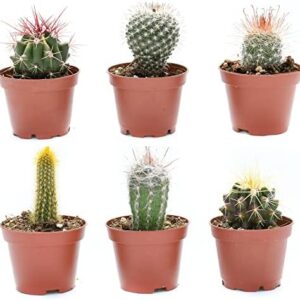When it comes to creating a sustainable and eco-friendly yard, there are so many ways you can make a positive impact on the environment. One of the best ways to do this is by incorporating DIY garden ideas that are not only beautiful but also good for the earth.
By going green in your garden, you can help reduce your carbon footprint, conserve water, and create a habitat for local wildlife. Plus, it’s a fun and rewarding way to connect with nature and enjoy the outdoors.
Here are some eco-friendly DIY garden ideas to help you create a sustainable yard that you can be proud of:
1. Plant a native garden: One of the best things you can do for the environment is to plant native plants in your garden. These are plants that are naturally found in your region and are well adapted to the local climate and soil conditions. By planting native plants, you can help support local wildlife and create a more biodiverse ecosystem in your yard.
2. Create a rain garden: A rain garden is a shallow depression in your yard that is designed to capture rainwater and allow it to slowly infiltrate into the ground. This helps reduce runoff and prevents erosion, while also providing a habitat for birds, butterflies, and other wildlife. You can create a rain garden by digging a shallow basin in your yard, planting native plants around the edges, and adding a layer of mulch to help retain moisture.
3. Build a compost bin: Composting is a great way to reduce waste and create nutrient-rich soil for your garden. You can easily build a compost bin using wood pallets, wire mesh, or even an old garbage can. Simply start adding food scraps, yard waste, and other organic materials to your compost bin, and let nature do the rest. In a few months, you’ll have homemade compost that you can use to nourish your garden plants.
4. Install a rain barrel: Collecting rainwater in a rain barrel is a simple and effective way to conserve water and reduce your water bill. You can use the collected rainwater to water your garden, wash your car, or even flush your toilet. To install a rain barrel, all you need is a large barrel with a spigot, a downspout diverter, and a platform to elevate the barrel off the ground.
5. Make your own natural pesticides: Instead of using harmful chemical pesticides in your garden, try making your own natural alternatives using ingredients like garlic, neem oil, and vinegar. These natural pesticides are safe for the environment, non-toxic to humans and pets, and effective at keeping pests away from your plants. You can find plenty of DIY recipes online or at your local garden center.
6. Create a bee-friendly garden: Bees are crucial pollinators that play a vital role in our food system, so it’s important to create a habitat for them in your garden. Planting a variety of flowers, herbs, and shrubs that attract bees can help support their populations and ensure they have enough food to thrive. Some bee-friendly plants to consider are lavender, sunflowers, and bee balm.
7. Use recycled materials in your garden: Instead of buying new garden decor and materials, try repurposing items you already have or using recycled materials like old tires, pallets, and glass bottles. You can create unique planters, bird feeders, and garden art using these materials, adding a touch of creativity and sustainability to your yard.
8. Start a container garden: If you don’t have a lot of space for a traditional garden, consider starting a container garden on your patio, balcony, or windowsill. You can grow herbs, vegetables, and flowers in containers made from recycled materials like tin cans, plastic bottles, or old buckets. Container gardening is a great way to conserve water, optimize space, and bring greenery into small urban spaces.
9. Practice water-wise gardening: To reduce water consumption in your garden, practice water-wise gardening techniques like drip irrigation, mulching, and xeriscaping. Drip irrigation delivers water directly to the roots of plants, while mulching helps retain moisture in the soil and suppress weeds. Xeriscaping involves using drought-tolerant plants and landscaping techniques to create a low-maintenance garden that requires little water.
10. Share your garden with others: Lastly, consider sharing your garden with friends, family, neighbors, or even local community members. You can host garden tours, organize workshops, or donate your surplus produce to a food bank. By spreading awareness about sustainability and eco-friendly gardening practices, you can inspire others to make a positive impact on the environment.
In conclusion, going green in your garden is a wonderful way to create a sustainable yard that benefits both you and the planet. By incorporating these eco-friendly DIY garden ideas, you can reduce your environmental impact, conserve resources, and create a beautiful outdoor space that promotes biodiversity and wildlife habitat. So roll up your sleeves, get your hands dirty, and start transforming your yard into a green oasis that you can enjoy for years to come.






